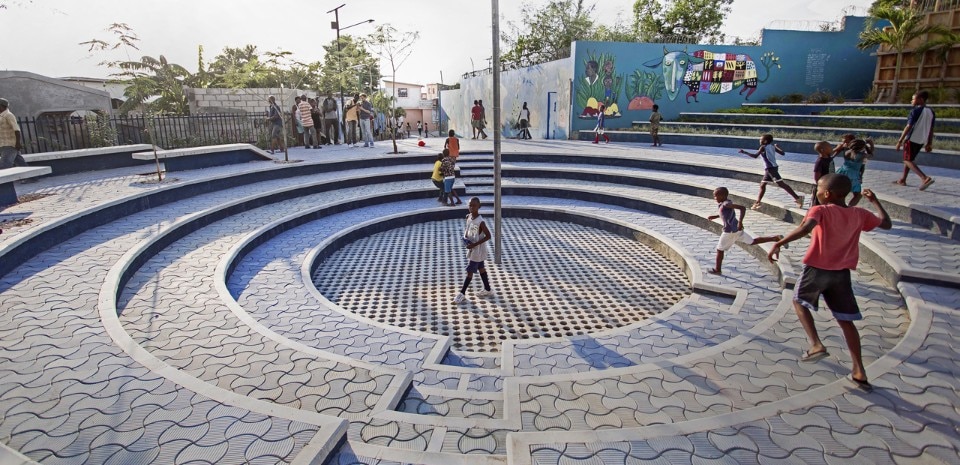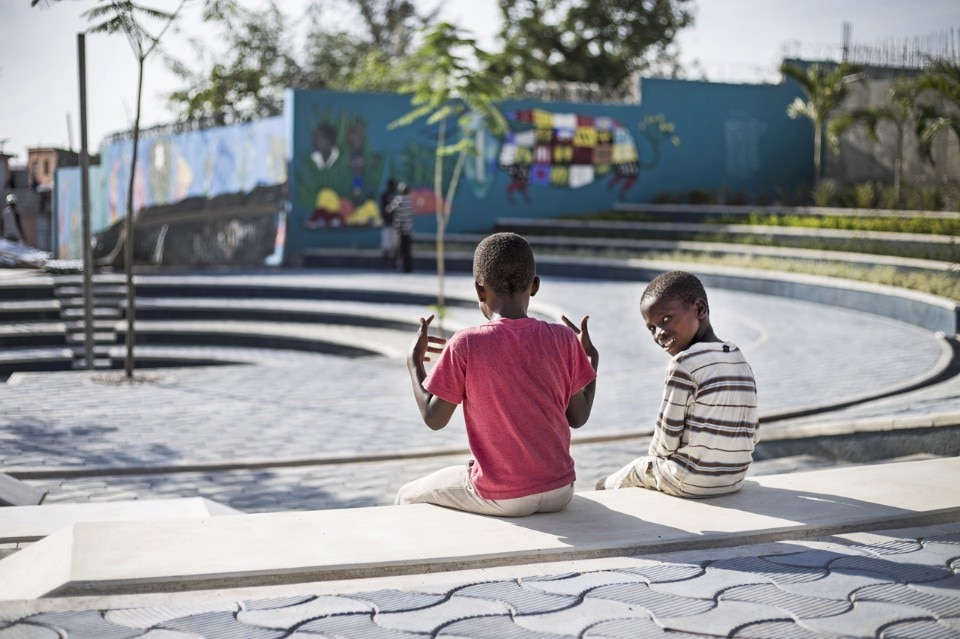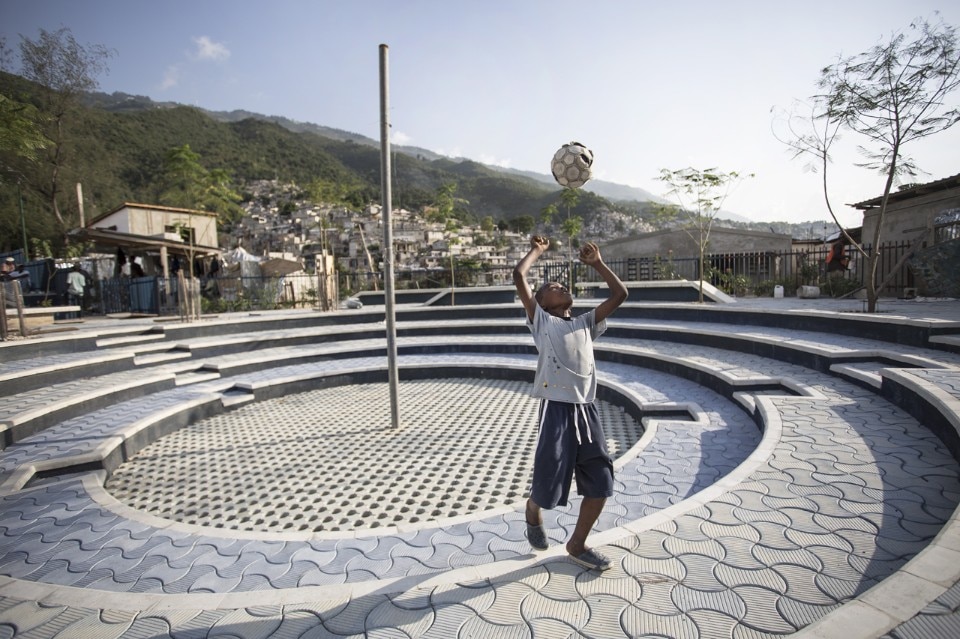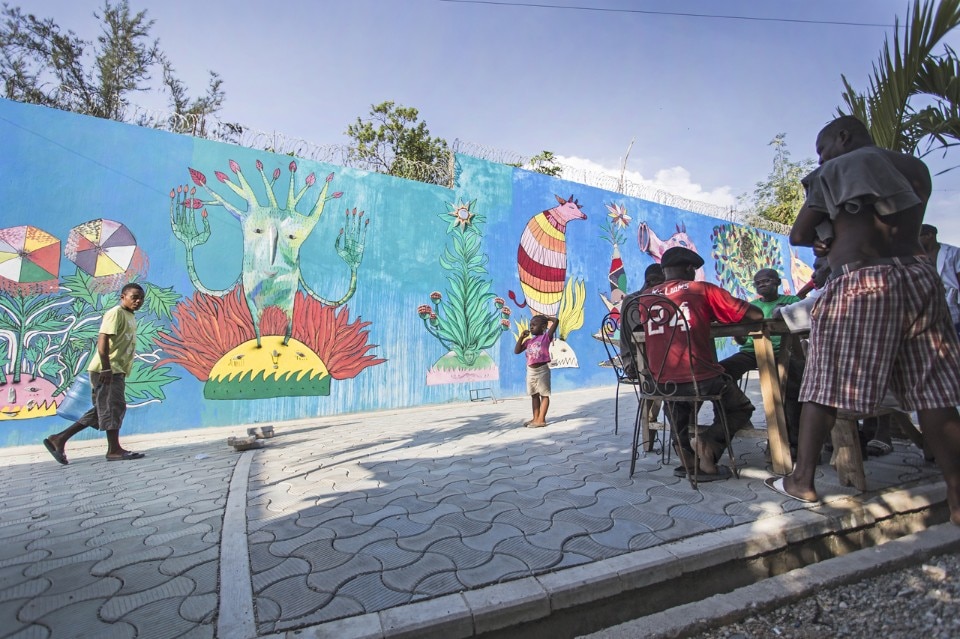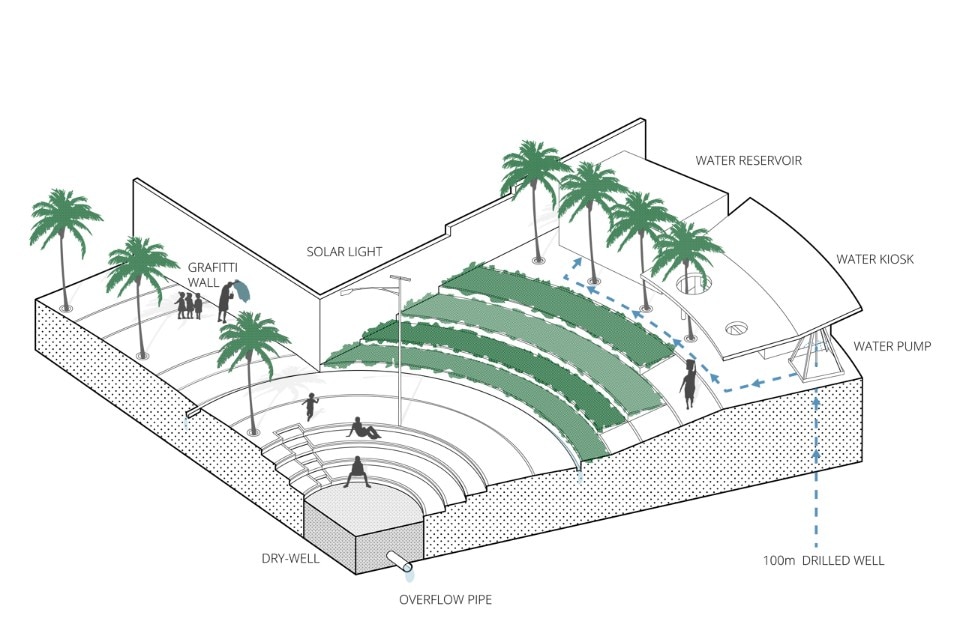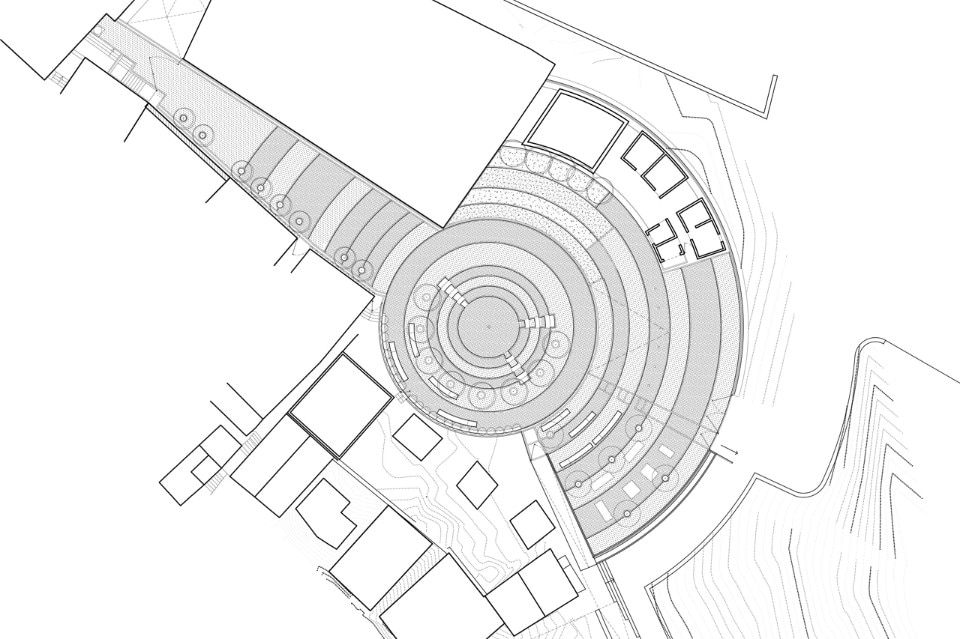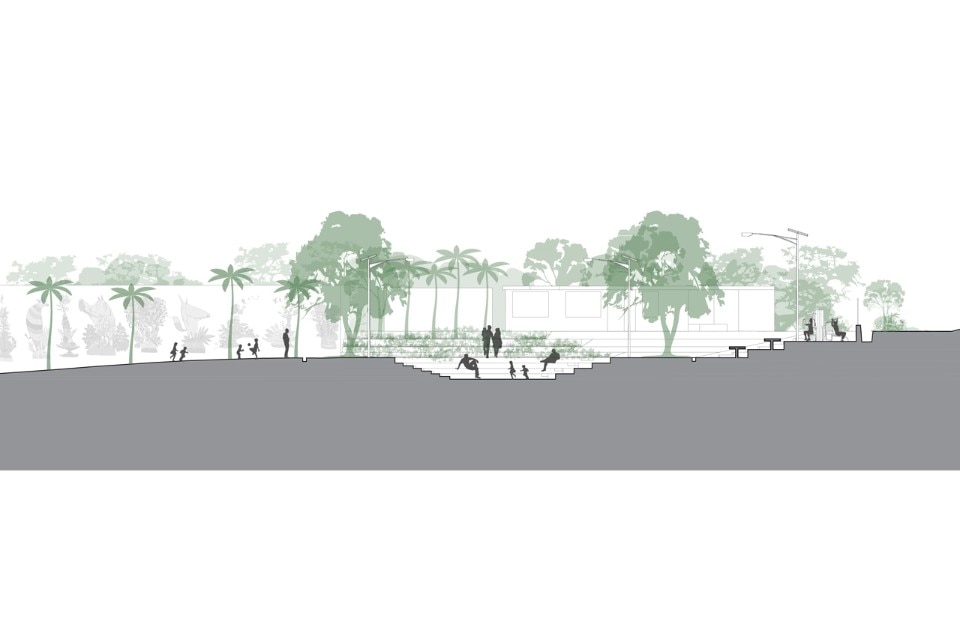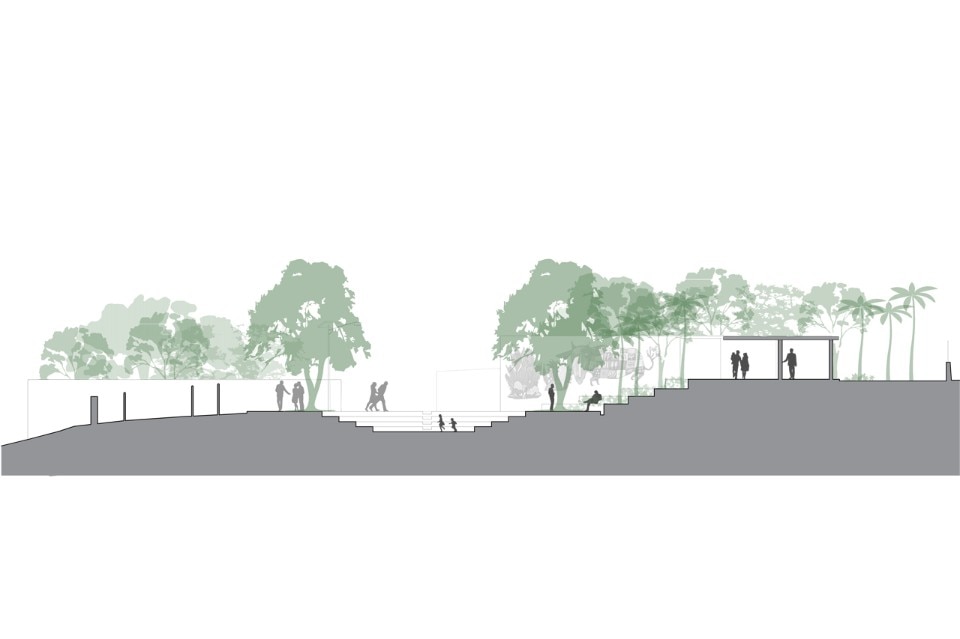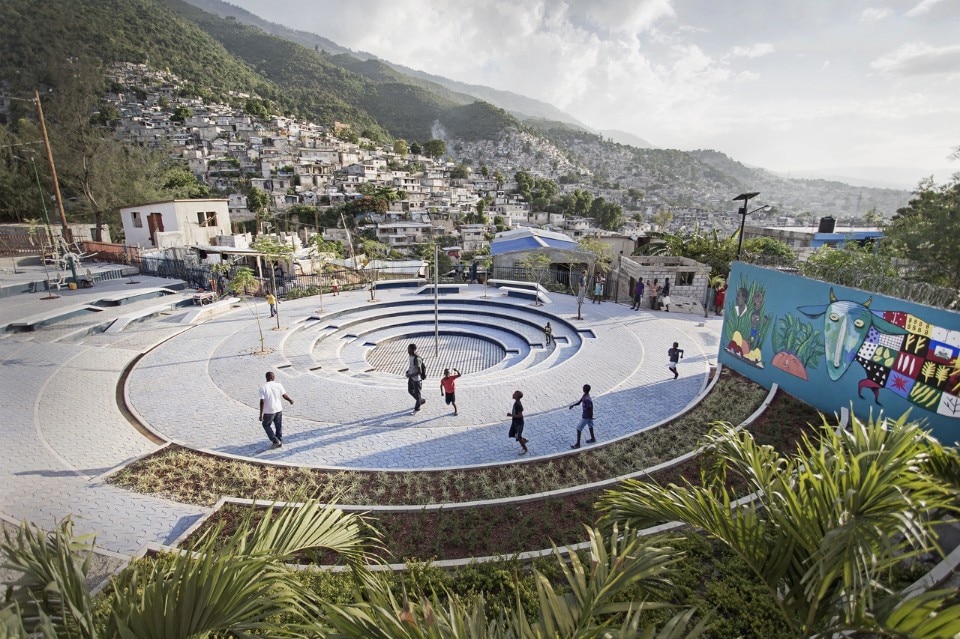
The design itself is inherently community-oriented and understands public space as an anthropological ground from which identity and social relations grow. Through a participatory approach and community engament at the core of the design process, this public space aims to give transformative power to a local community and to provide the residents with a sense of ownership, identity and pride. The goal was to create a safer and cleaner environment, which would help reduce crime, violence and anti-social behaviour in the area.
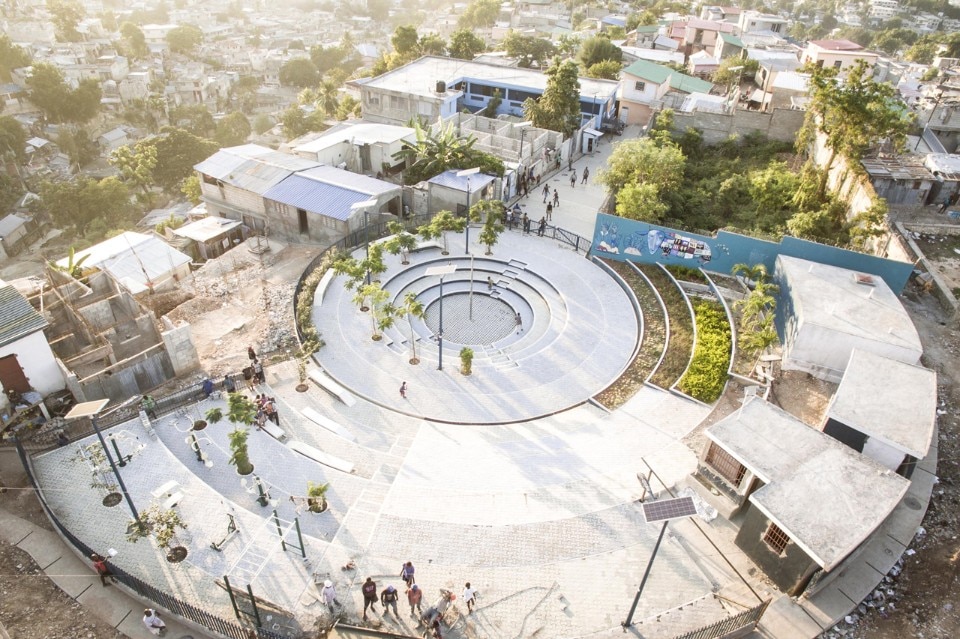
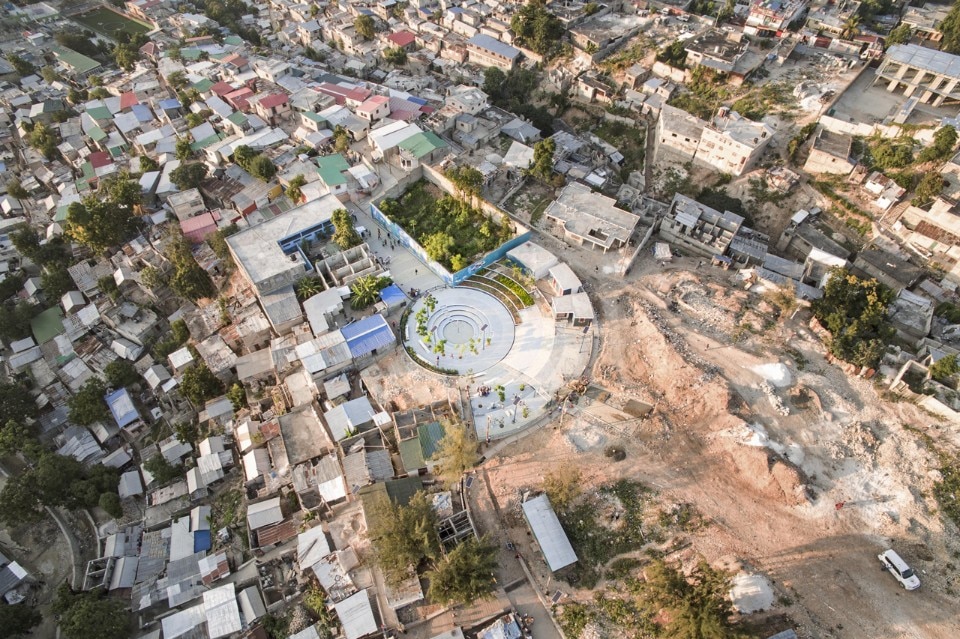
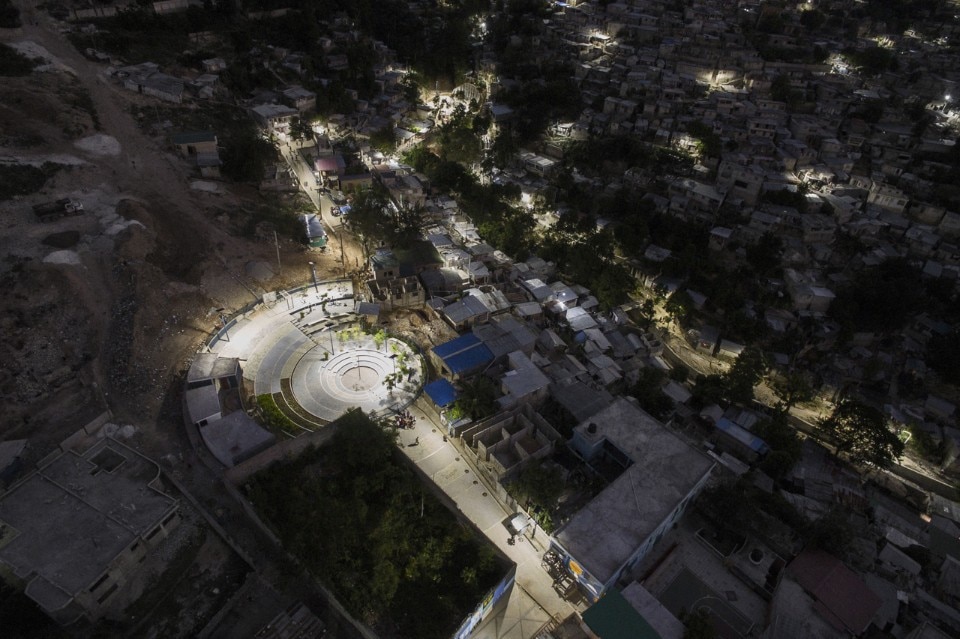
Place Tapis Rouge, Port-au-Prince, Haiti
Program: public square
Architecture: EVA Studio, Emergent Vernacular Architecture
Team: Andrea Panizzo, Jeannie S. Lee, Gianluca Stefani, Anna Calogero, Etienne Pernot du Breuil, Edoardo Paoletti, Samuel Eliodor, Berrousse Exius, Faudia Pierre, Radim Tkadlec, Clément Davy
Artists involved: Bault, Pascal Monnin, Le Centre d’art
Engineering: Sisul Consultant
Area: 1,300 smq
Client: Global Communities
Donor: American Red Cross
Contractor: FICCAS, Arcod, Ginkgo Landscape
Completion: 2016


